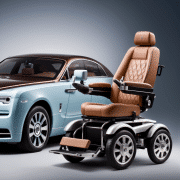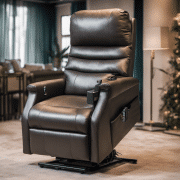How to Choose a Walker
A rollator is a 3 or 4 wheeled walker fitted with brakes and usually with a seat. The rollator is ideal for users who are reasonably mobile and require additional support when walking. When selecting a rollator, there are a few easy steps to choose the most appropriate type. Some rollators fold up sideways, making...

A rollator is a 3 or 4 wheeled walker fitted with brakes and usually with a seat. The rollator is ideal for users who are reasonably mobile and require additional support when walking.
When selecting a rollator, there are a few easy steps to choose the most appropriate type. Some rollators fold up sideways, making them better for storage and transport. Others are ultra-lite, making them ideal for transporting and pushing the walker much more manageable, particularly for users with reduced strength.
Is the rollator for indoor or outdoor use?
The first question to ask is where will the rollator mainly be used. For indoor use, a rollator with small wheels such as 6 inches will be suitable as the surface is smooth and flat. A narrow and short frame may also suit. This more compact frame will enable the user to navigate through doorways, hallways and tight spaces.
A rollator with larger wheels such as 8″ in diameter or more may be ideal for outdoor use. These larger wheels are suited to the rougher, uneven surface and are better for mounting curbs.
Should I choose a three or four-wheel rollator?
Three-wheeled walkers are often lighter and more manoeuvrable. Generally, a tri-wheel rollator does not have a seat, so the user must be confident that they can weight bear for a prolonged period. Because of the smaller frame, these rollators usually fold to a compact size, making them ideal for travel and storage. The main factor to consider is the reduced stability due to the triangular base.
A four-wheeled walker provides improved stability and thereby reduces the risk of the walker tipping over, particularly where there is an uneven surface and when navigating footpaths and curbs. If you need more support when walking or taking short breaks, a four-wheel rollator may be the best option. There is an extensive range of walkers which a designed with a seat. The benefits of a seat are not only valuable when out and about. If the seat is firm, a user can place items such as food plates and laundry baskets to transport around the home. The main benefit of this dual-purpose seat is to facilitate independence for the user.
Is transporting and storage important?
You may regularly transport your walker in a vehicle. If this is the case, you may need to select a lightweight and compact rollator. For example, a three-wheeled rollator is usually lighter and folds up smaller than a 4-wheeler. This compactness may also make it better for storage in small homes or apartments when it is not in use. On the other hand, there are plenty of lightweight 4-wheeled rollators on the market, so it is a good idea to check weight and size specifications when making your selection.
What size rollator should I choose?
It is most important to choose a rollator that fits your height and weight.
- When purchasing a rollator, use the below steps to determine the right one for you
- Measure for the handle height that you require:
- Stand up straight with your arms hanging naturally at your sides
- Have an assistant measure from the floor to the crease of your inner wrist
- If you have a rollator in front of you, hold onto the handles. Allow your hands to rest at a 15-degree angle.
- If you are without a rollator, you can rest your hands on any surface. This measurement will determine the ideal height of handles.
Ensure the seat height is suitable:
For rollators with a seat, find one that suits your height. The seat height must be high enough for you to be easily able to stand up with the support of the handlebars. It must also be low enough to allow your feet to reach the ground.
Measure the distance between the floor and the seat. Check these measurements against the rollators dimensions. This seat height is an important measurement. If a seat is too low, it may be too difficult to transfer to and from the seated position.
One final recommendation, be sure to check the maximum weight capacity of the rollator to make sure that it can adequately support your weight.
Preferred Suppliers for the Healthcare Industry Since 2003
Patient Handling is founded on a sound base of great staff, great products and great partners. We strive to put our clients needs above all else and focus on well thought out solutions for complex needs.



Receive latest news
Contact Us
We are an online store only. Please contact us if you would like a product specialist to assist with your purchase.







